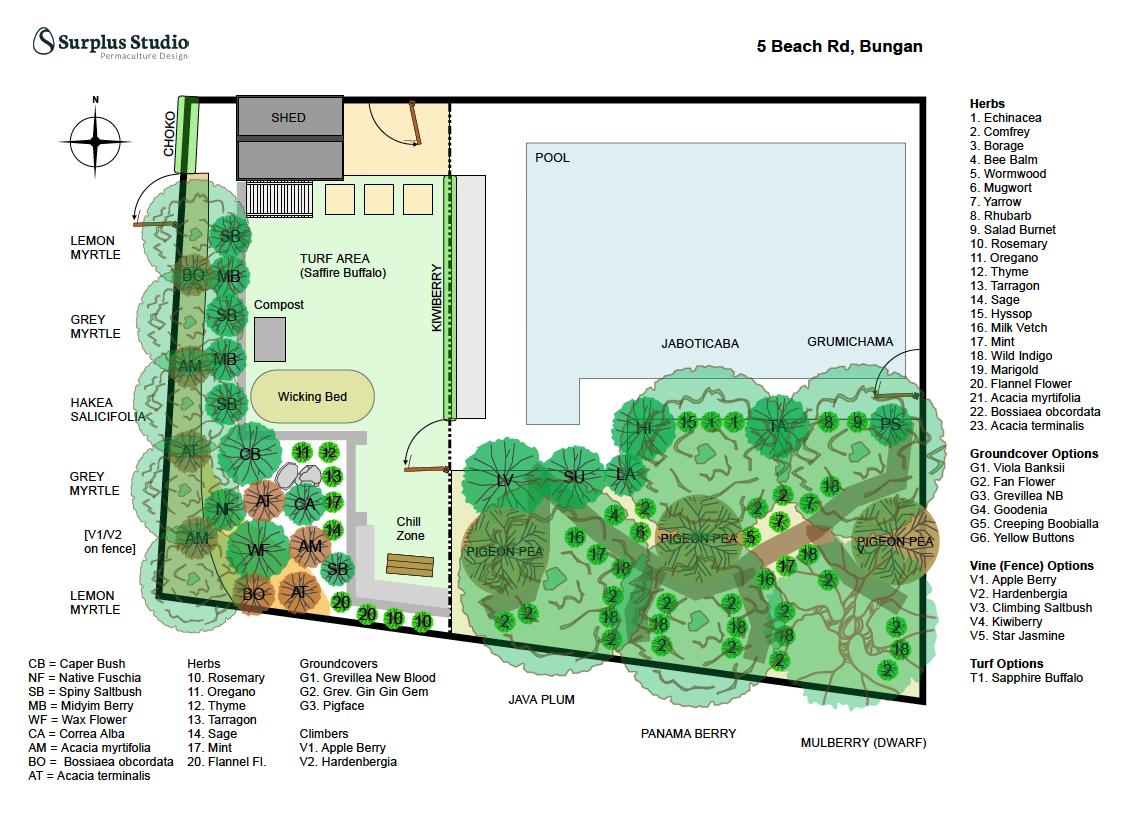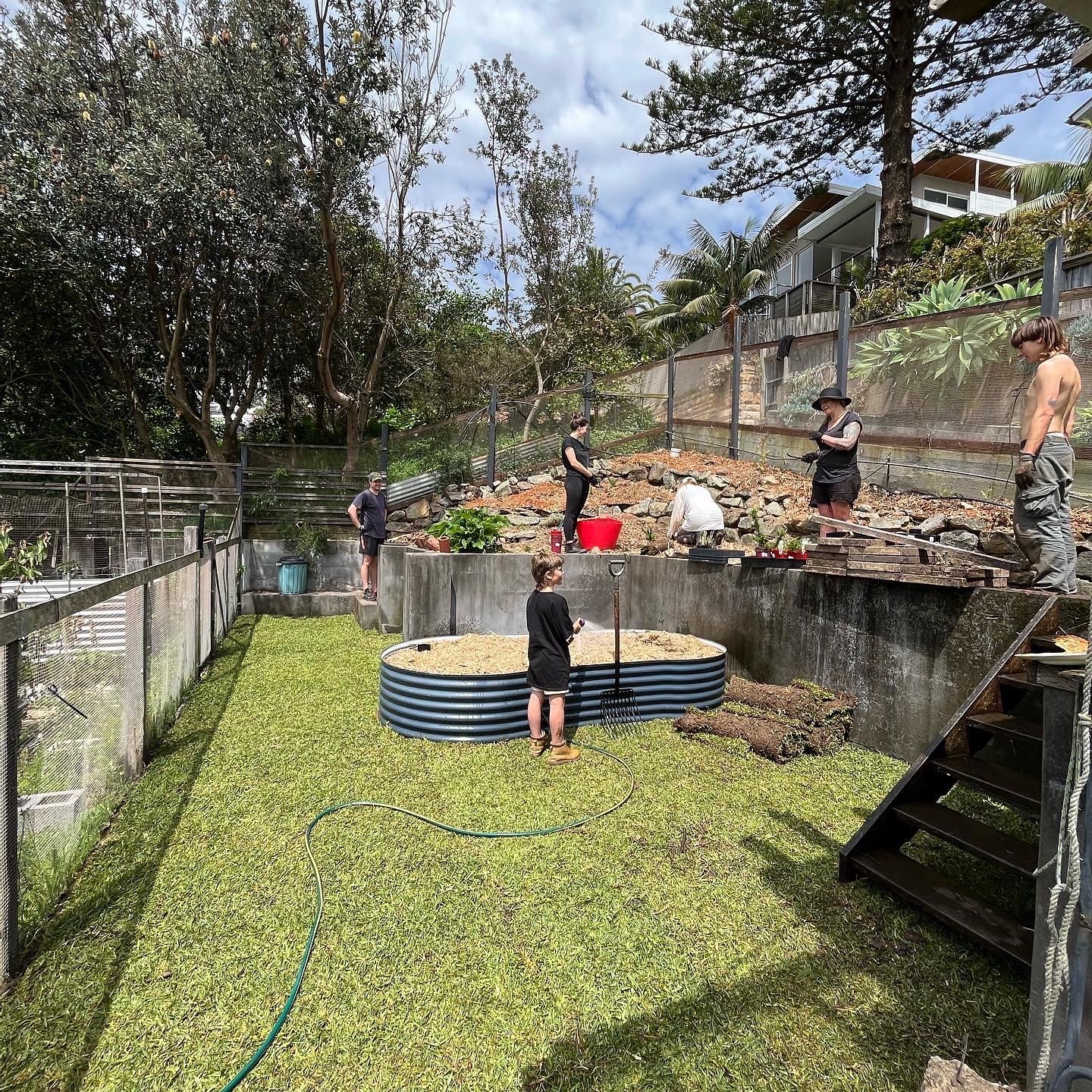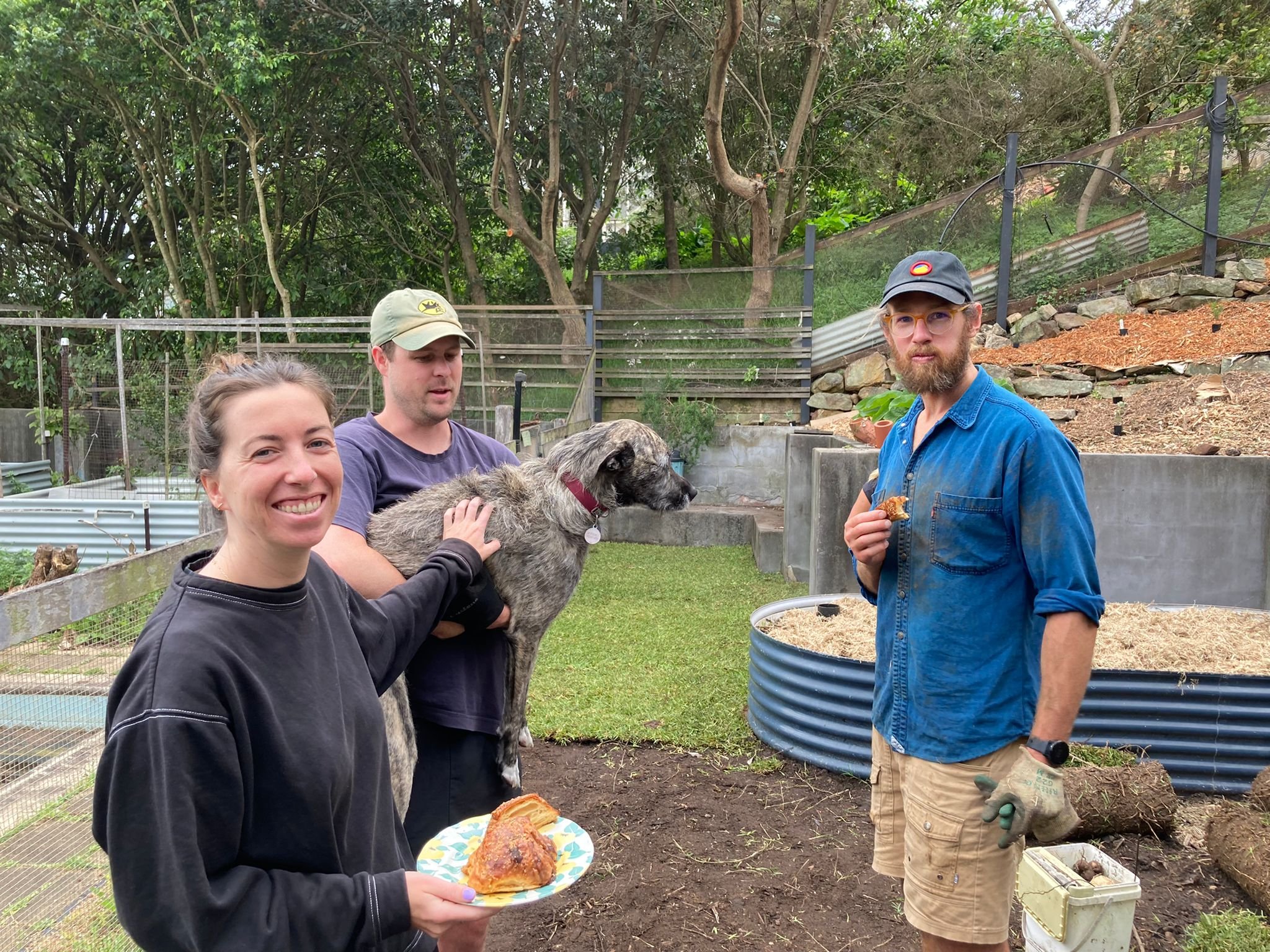Bungan Edible Sanctuary
NSW, Australia // Latitude 33°S // Elevation 40m // 431 sqm
This edible sanctuary, in the heart of Sydney’s Northern Beaches, is the embodiment of abundance in an urban environment and shows us that, when we work with nature, yield is only limited by our imagination. I was lucky enough to whip up a design for these kind folks who presented a very interesting brief with two distinct sections.
The left side of the garden was designed to be lower maintenance with a focus on edible native plants. I say “lower” because there are always things to be done! Tending, pruning, fertilising (organically of course) and even talking to plants are relationship building activities that will help them on their way. We also added turf! Turf is generally not preferred in Perma circles because of the lack of diversity along with the energy it uses BUT the owners have a relatively large and energetic dog (Millie) who needs her own space to enjoy (and to go to the bathroom). So turf made sense in this case and being a relatively small area (30 sqm), it can easily be maintained with a push mower.
The right side, on the other hand, was to be something entirely different: a food forest with a preference for fruiting exotics along with shrubs and herbs with medicinal/herbal uses.
Permaculture is an ecological practice, so we must concern ourselves with the relationships between living things and their environment. As humans, we have the ability to positively influence these relationships (to enable rather than control) but we must remove our egos and take lessons from nature. The Principles of Permaculture are based on lessons, here are a few that stood out for me in this design:
Select species that perform multiple functions (eg. hedging, food, erosion control, shade, wildlife, nutrient accumulation).
Always be stacking. We select species to occupy niches in every layer (canopy, shrub, herb, groundcover, vine) which reduces space for undesirable species.
Get a yield. The majority of these plants have edible and/or medicinal properties.
Pioneers and succession. Pioneers will establish quickly, accumlating various nutrients (eg. nitrogen) that add fertility to the site. In later stages of succession, these pioneers can often be sacrificed to make room for the target species.
Inputs are provided by the system. Just like a forest we want our gardens to supply and cycle their own nutrients.
Diversity is the spice of life and the more we have, the more stable and self-regualting our gardens can be.








